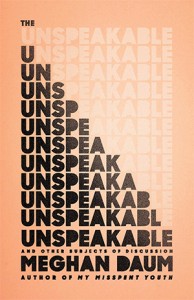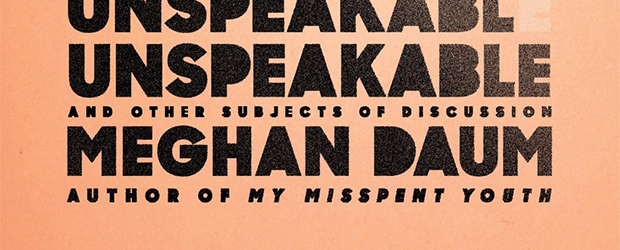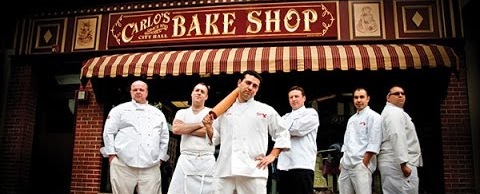
Enter Meghan Daum, a writer whose book The Unspeakable was pretty close to un-put-down-able when I picked it up on New Year’s Day. I had begun my self-designated reading day opening Anna Karenina (my fourth attempt over 15 years or so), but with all apologies to Tolstoy I may need to take a class to get through it. That’s how I read Ulysses and Dante’s Inferno and was introduced to the work of Louise Gluck and Vivian Gornick and some of the more obscure works of Virginia Woolf, so it’s all good. But that’s for another day.
About halfway through Daum’s collection of essays, I had a cascade of thoughts. Here are two of them:
~ Go get some Post-It flags to mark passages.
~ You need to write about your experience with this book.
Of course those are intertwined.
By the time I turned the last page, flags scattered throughout, I wasn’t sure what fascinated me more – that Daum captivated me while writing about topics I had zero interest in or that there were times I felt like she was in my head expressing my thoughts.
Regarding the former, let’s just say I wouldn’t know a Joni Mitchell song if it bit me in the ass (there’s a whole essay about her), I’ve never owned a dog and am kind of ambivalent about them (again, an entire essay devoted to the topic), and my experience growing up in a food-centric house could not be more different from the woman who practically breaks out in hives in the grocery store (yes, that’s Daum). I enjoyed them all.
I think the reason I kept reading is reflected somewhere in this passage that falls more in the “she’s in my head” category, although I won’t pretend to have ever been this cogent on the topic. Daum is explaining the difference between putting yourself out there and letting it all hang out:
Letting it all hang out is indiscriminate and frequently gratuitous. It’s the stuff of paint flung mindlessly at a canvas and words brought up via reverse peristalsis, never to be revised or thought better of, always to be mystically discounted as “a gift from above.” Letting it all hang out is an inherently needy gesture. It asks the audience to do the heavy lifting. It dares the audience to “confront the material” without necessarily making that material worth anyone’s while.
Putting yourself out there is another matter entirely. It’s an inherently generous gesture, a gift from artist to listener or viewer or reader. The artist who puts herself out there is not foisting a confession on her audience as much as letting it in on a secret, which she then turns into a story.
I found this so powerful that I started, in my mind, to flip through a bunch of my own columns and essays from nearly 30 years in journalism to figure out which ones fell into which category. Certainly I didn’t always succeed at putting myself out there and instead wound up letting it all hang out. Most assuredly. These two passages, contained in the Joni Mitchell piece, incidentally, will forever be my barometer moving forward, not just on my work but in judging the seemingly endless stream of bloggers who think editors or even self-editing are so ‘yesterday.’
I love my craft and I love others who love it and treasure it and honor it. This is another thought that kept coming up as I turned the pages of The Unspeakable.
This brings me to the life stuff.
I can’t do justice to the essay that is Matricide. Buy the book and read it. But I can point to a piece of dialogue that reminded me of the many, many bits we share with therapists so they’ll better understand us.
During that last visit, while my mother was describing in detail the complexities of her latest theater production, my grandmother interrupted her mid-sentence and asked, “Honey, do you ever wish you’d been a career gal?” … “Jesus Christ, what do you think she’s been talking about?” I snapped as my mother fumed silently.
And while that is almost painful to get through, later in another essay there is expressed what for me captures the pure joy of coming out the other side of therapy. Before sharing, I should add that Daum doesn’t write this or the aforementioned passage in a therapy context, but this is how her thoughts landed on me.
Past a certain age, it becomes tiresome to blame one’s deficits on one’s parents … Now in my mid-forties, I’ve been independent of my parents for more than a quarter century … I’ve had plenty of time to learn how to make risotto or even carve a turkey. That I choose not to says less about my upbringing than it does about my innate recalcitrance.
Yes, there was a point in my own adult life where I turned that corner, realizing I could like Halloween even though my mother doesn’t or any number of other things. She doesn’t like flowers and after years of saying I don’t either it became obvious one day that my Mikasa china, my comforter and the massive framed print in my bedroom were variations of Monet’s water lilies. Yes, imagine having the epiphany that even though my parents have no interest in art museums, the fact that I love them doesn’t make me odd, it makes me me.
Daum keeps me reading and also keeps me nodding. That’s part of the charm of her book.
In a piece where she talks about her dating life, I could not have related to this more: “I regarded my love interests less as potential life mates than as characters in a movie I happened to have wandered into.” Or when she takes issue with an article about marriage and then has a realization: “It was talking about normal people who wanted normal things. It was talking about people who get their adventuring out of the way in college or even high school by partying so hard that by their early twenties they just want to sit on the couch watching TV with the same person for the next sixty years.”
That has never been me. It took me a long time to realize I wasn’t one of the normal people. And even longer to accept and enjoy it. That goes for parenting, too, and Daum hits that topic hard.
After more than a decade of being told that I’d wake up one morning at age thirty or thirty-three or, God forbid, forty, to the ear-splitting peals of my biological clock, I’d failed to capitulate in any significant way. I would still look at a woman pushing a baby stroller and feel more pity than envy. In fact, I felt no envy at all, only relief that I wasn’t her.
The only time I’ve ever seen honesty resembling this on this topic was when Annie Ernaux revealed herself in A Frozen Woman: “I stare and stare at girls barely older than I am trundling baby carriages, and I feel completely repelled by their larval, slimy little darlings.”
My gosh, talk about unspeakable. There’s something delicious about the authenticity.
And since I’ve brought up the authentic word, I’m going to cop to having Daum make me rethink some of my beliefs about how to approach life. I want to end this by talking about the comfort zone and those platitudes that tell us all the goodness and dreaminess and fabulousness exists outside of it. Because, you know, I bought into those. Now, not so much.
Daum writes that contentment is something to strive for and describes it as not settling, but “feeling I’m in the right life.” Further, she says, “The key to contentment is to live life to the fullest within the confines of your comfort zone. Stay in safe waters but plunge as deeply into them as possible. If you’re good at something, do it a lot. If you’re bad at something, just don’t do it.”
Reminiscent of the message in Malcolm Gladwell’s Outliers. Focus breeds mastery.
“[The] path of least resistance has a lot going for it,” Daum writes. “The comfort zone isn’t where you lose yourself. It’s where you find yourself.”
My comfort zone is right here. This. Having an experience with another’s art and sharing it in mine.
If I can shed some fetters along the way, all the better. Color me content.






